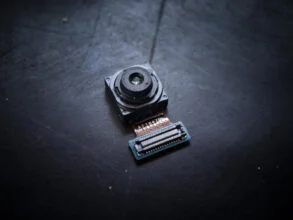Recycling Electronic Waste in Calgary Is a Breeze with Quantum
- 1 What Does the Term “E-Waste” Mean?
- 2 Does E-Waste Pose a Risk?
- 3 What makes e-waste an issue?
- 4 Tips For Maintaining Your Electronic Equipment And Making Sure It Is Recycled
- 4.1 Extend the life of your electrical gadgets
- 4.2 Please give it to a worthy recipient
- 4.3 Recycle it
- 5 Our health and the environment can benefit from reducing e-waste
You may have heard of e-waste previously. What is electronic garbage, or e-waste, and why is it important? Perhaps you have already discovered or learned this on your own.
What Does the Term “E-Waste” Mean?
Beyond the fact that it is electronic garbage, e-waste has no official or widely recognized definition. This is partly because electronics is a complicated field.
For instance, if you own a desktop computer, the metal casing may be recycled as is (check your local regulations), but the interior components would be considered regular e-waste. Conversely, a laptop may be considered e-waste; certain e-waste, like lithium-ion batteries, wouldn’t fit inside facilities.
Does E-Waste Pose a Risk?

E-waste poses significant risks. You may be viewing this article on your cell phone, which contains a variety of poisons and heavy metals. The fact that they are currently safely contained makes all the difference.
Such dangerous items will be free to poison the environment, soil, water, and eventually, plants, animals, and humans if exposed to the toxic elements of heat and stress of a landfill or, worse, an incinerator.
Do you have an assortment of outdated equipment in your basement or closet that you’re unsure how to use?
The answer is yes, just like for most Americans. However, as soon as you attempt to dispose of those outdated computers, TVs, cellphones, or other electronics, they turn into electronic garbage, or “e-waste,” which poses a risk to our health and the environment.
“Used devices that are nearing the conclusion of their lifespan and are discarded, donated, or given to a recycler” is how the EPA describes e-waste. Don’t panic; electronic recycling Calgary e-waste recyclers can revamp and revitalize these gadgets in several ways.
What makes e-waste an issue?
One of the waste sources with the fastest global growth is e-waste.
Every year, over 6.9 million metric tons of e-waste are produced in the US alone. The Global Economic Forum, on a world scale, predicts that by 2030, we will generate about 81.6 million metric tons of e-waste annually. That’s a concern, particularly considering that just 17.4% of all that e-waste gets recycled effectively globally.
The fact that it is challenging to recycle these materials effectively is one aspect of the issue. To begin with, the infrastructure and regulations about the recycling of e-waste are lacking. Furthermore, e-waste must be handled carefully to prevent the release of potentially dangerous substances like lead and mercury into the environment.
Two-thirds of the pollutants found in landfills are caused by e-waste, even though it comprises just over two per cent of the waste stream in the United States. Furthermore, these hazardous substances can pollute groundwater and seep into the soil when disposed of incorrectly at a landfill.
Electronics must be disposed of properly for this reason. How can e-waste be reduced?
The three Rs—reduce, reuse, and recycle—are well known. By extending the life of our outdated devices, we may cut down on the quantity of new ones we buy.
Tips For Maintaining Your Electronic Equipment And Making Sure It Is Recycled

Here are some tips for maintaining your electronic equipment and making sure it is recycled or repurposed when it has to be replaced:
Extend the life of your electrical gadgets
The secret to lowering e-waste is protecting your devices to increase their longevity. Click here to learn more about e-waste and how you can reduce yours.
To ensure your batteries last as long as possible, use sturdy casings, change them when they run out, and keep your gadgets away from moisture and temperature extremes.
Please give it to a worthy recipient
Consider giving any working electronics you no longer need to a nearby institution. It’s a fantastic way to prevent devices from ending up in landfills and support your neighbourhood. A lot of community centres, schools, and charities accept used devices.
Recycle it
Carefully discard your devices properly if they are nearing the end of their useful lives. Seek out nearby electronic recycling facilities that will dispose of your electronics securely and salvage any useful components for future use.
Best Buy and Staples are two electronics retailers that will likely recycle your damaged devices, and your neighbourhood hardware shop will likely accept used light bulbs and chargers (though you should check with them first).
Our health and the environment can benefit from reducing e-waste
Although e-waste is becoming a bigger issue, everyone can have an impact. By safely reusing, donating, and recycling our gadgets, we can lessen the negative consequences of e-waste and save the environment for future generations.
Additionally, we can ensure that the electronics producers are making an effort to facilitate the responsible reuse, recycling, or extension of the life of our gadgets.

















